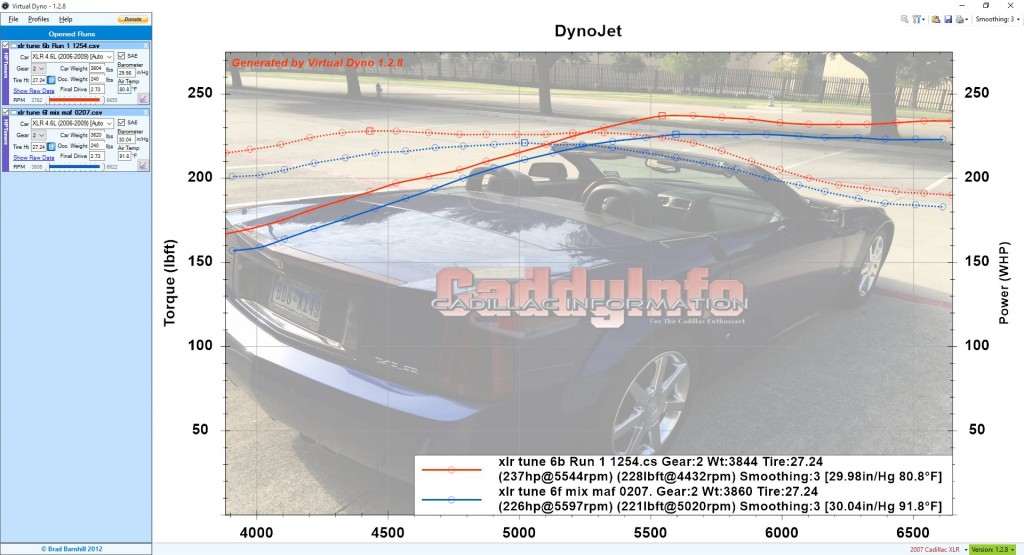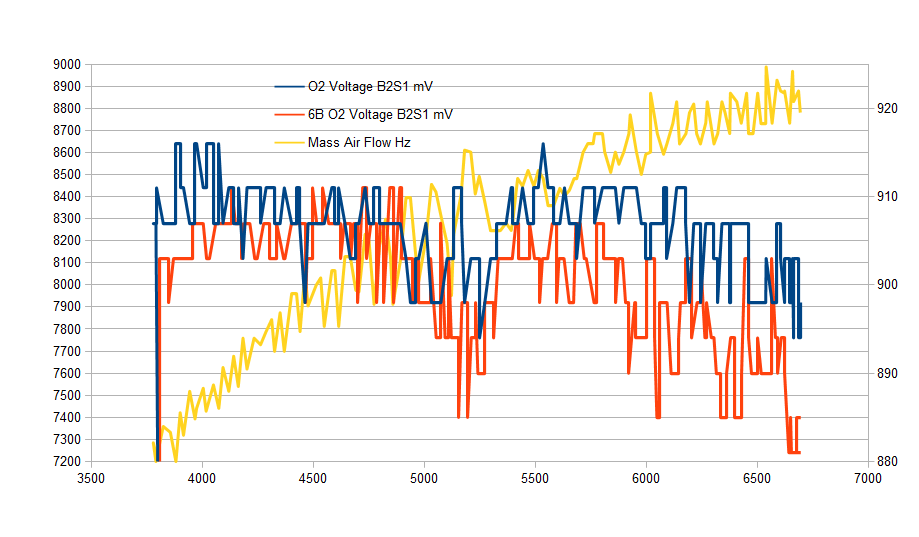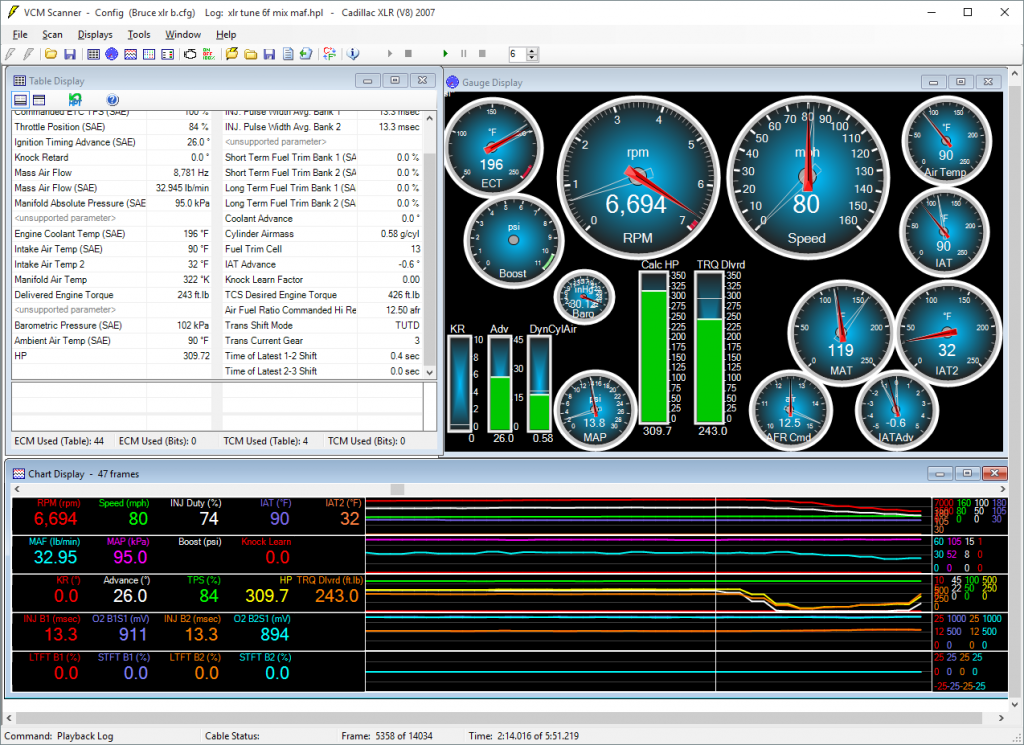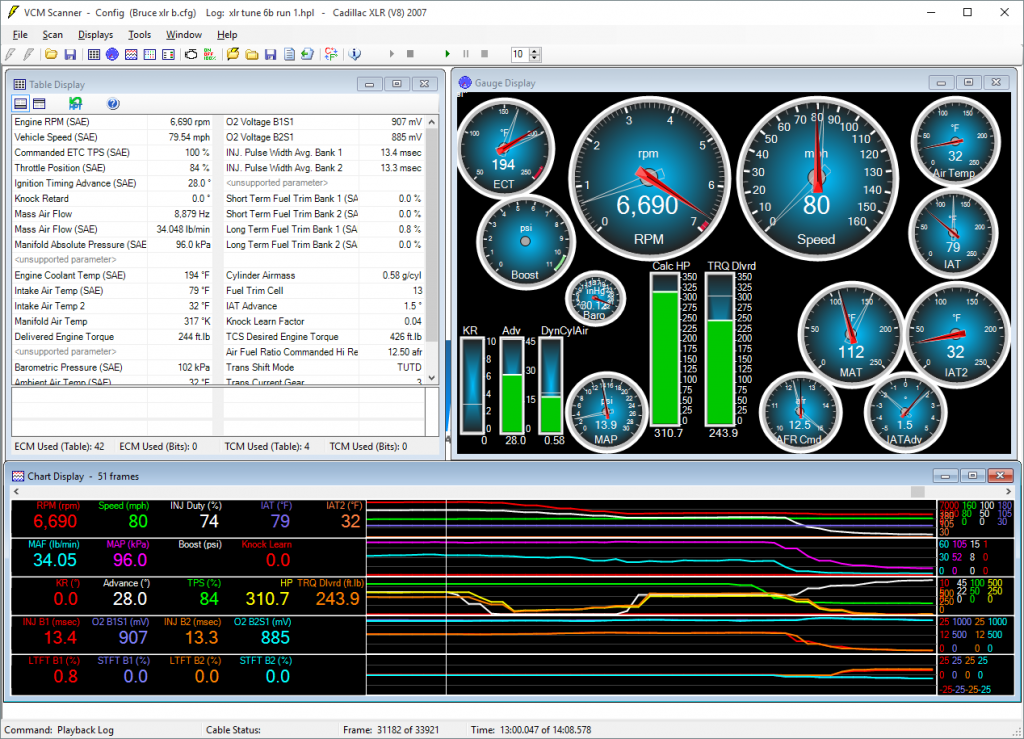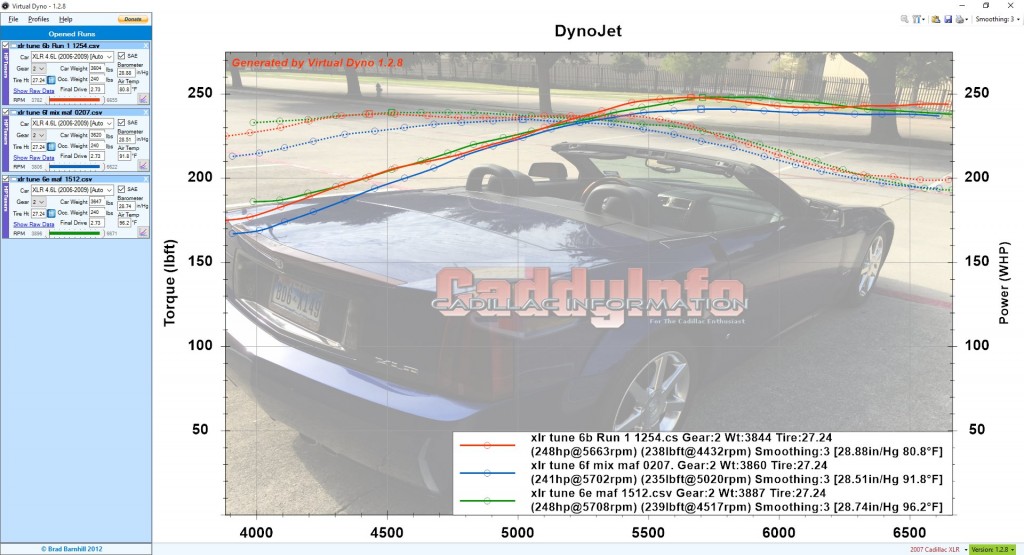Current Scan snapshot:

Prior scan snap shot at same rpm/speed showing throttle closing then:

First test for my ATS-V LF4 with tune 3c2. My intent is to change the least number of parameters in order to allow the engine to make as much power as it can. My goal is a stable 18 psi tune with no KR and no throttle closing.
Current conditions were 68F, 12 mph wind, 92% humidity, 29.81 in Hg pressure. SAE correction factor 0.9923039631981221, so 467 hp equates to 463 SAE 1349 HP.
There was some Knock Retard (KR) at cylinder pressures 1.16-1.32 during full throttle operation. I used a table to analyze where I was getting KR by RPM and pressure, then reduced the spark commanded in this region by 1 point in the effected areas. A rule of thumb is reduce the spark 1/2 of the KR observed. In my case this appears to have reduced the KR but not totally, so I will need more attention here.
Torque Management – General – max engine torque limit – I multiplied the 0% and 20% alcohol rows by 1.2, for a 20% increase.
Torque Management – General – TCS max torque set from 445 lb ft to 550 lb ft.
Torque Management – Driver demand – tables A and C I multiplied the bottom row by 1.1, then the bottom 2 rows by 1.1, then the bottom 3 rows by 1.1. This applied a stacking increase the the bottom 3 rows.
Torque Management – S/C Boost control – max limit I added 2 psi across from the left up through manifold temp 158, leaving higher temps unchanged. This added 2 psi to ceiling when the manifold temperatures are in check.
Good news: Holding throttle. the first image shows throttle is matching the pedal input. Also, boost (math) around 18.x psi total; here, 17.8 psi versus 14.9 psi prior, so 2.9 psi increase.
To do list: Still some KR to clean up with reduced spark. I also still see hints of desired falling in ranges I am unsure why it is not holding stable, so more study needed.
I am making progress toward my goals; I see 18.4 psi of boost, and no throttle closing. More tuning needed for KR.



